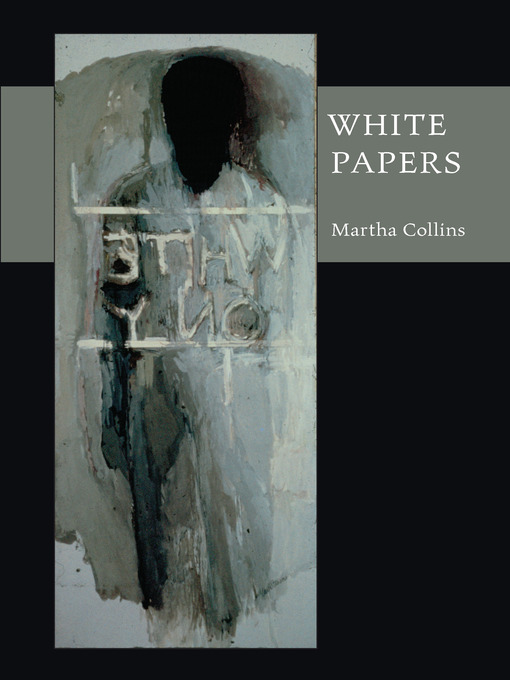
White Papers
Pitt Poetry
کتاب های مرتبط
- اطلاعات
- نقد و بررسی
- دیدگاه کاربران
نقد و بررسی

December 19, 2011
This tightly focused, strongly argued book-length sequence uncovers a personal, regional, cultural, and institutional history of whiteness and white privilege: its clipped quatrains, spare recollections, and embedded citations give the rare and valuable show of a white author reflecting on the meanings and the oddities of race. Collins’s Blue Front (2006) told stories of an Illinois lynching, and this volume clearly grew out of that one; but she here deploys a range of forms, visual as well as aural, and a range of effects, from a hammering self-reflection (“could get a credit card loan car/ come and go without a never had/ to think about”) to ironic collage. Race is not only nor always black and white: “the natives of southern New England,” Collins notes, were “our first them.” But black and white and their intertwined asymmetries rule this serious collection. Puns on color introduce musings on minstrelsy; recollections of Collins’s not quite all-white Iowa childhood stand besides pictures of unacknowledged bigotry. Some readers and cultural critics may object that Collins has simply put familiar arguments into verse; the same readers might, instead, admire how much of herself, and of her sense of form, Collins brings in.

January 1, 2012
The subject of these language poems is racism. But there's a twist: they're about being white in a multicultural society. Generally written in free verse, though contemporary variations on the sonnet are included, the poems follow a roughly chronological order, with Collins musing on black/white relations beginning with her parents and moving through her own upbringing. Some of the poems focus on stark, frightening events, as when her father witnesses a lynching as a four-year-old (the subject of her book-length poem, Blue Front). Others are driven by innuendo; the poet, for example, remembers a favorite black rag doll, whose "smile is painted on and is [therefore] almost certain never to come off." Using quotes, old newspaper clips, and allusions to songs and other poems (e.g., William Blake's "The Little Black Boy"), these collagelike pieces usually coalesce around a central image. VERDICT Although many of the poems feel like exercises in verbal dexterity--their line breaks, parenthetical phrases, non sequiturs, shifting viewpoints, and wordplay often make them unnecessarily difficult to understand--the best achieve a kind of breathless resonance.--C. Diane Scharper, Towson Univ., Lutherville, MD
Copyright 2012 Library Journal, LLC Used with permission.

February 1, 2012
Collins continues the inquiry into race that shaped Blue Front (2006), here, in this startling and provocative collection, exploring the motif and myth of racial whiteness. She writes, history leaves us nothing / but not: like children playing at being / something, we made, we keep / making our whiteness up. The imaginary quality of whiteness reveals itself as a childlike fantasy as Collins evokes its abstract quality. Collins' flair for metaphor is evident when she shifts from five white baby dresses to Gray faces framed in white / Black faces in negative / Shadows in the sidewalk's gray mirror. The movement from soft white baby dresses to the harsh concrete of the sidewalk seems to be a movement from comforting to cold. The fact that she has outgrown the baby dresses also indicates a movement from the stark world of black and white into the more hazy world of gray. Within the stark chromatic scale of black, white, and gray, Collins evokes a dazzling spectrum of palpable emotions, racial tensions, and unraveling binaries.(Reprinted with permission of Booklist, copyright 2012, American Library Association.)

























دیدگاه کاربران